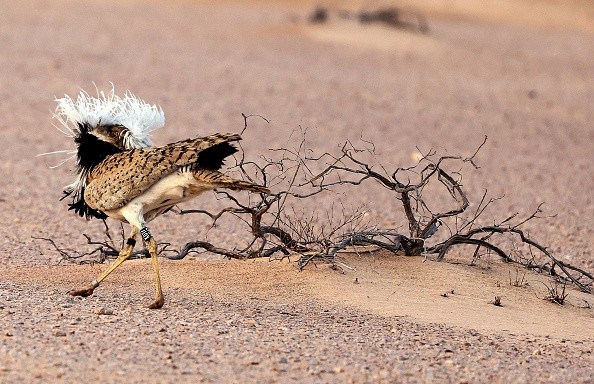A fascinating study revealed that the world's heaviest flying bird, the "Great Bustard," could self-medicate using traditional plant medicine.
The plants help fight or kill diseases harmful to them.

Other than being the heaviest flying bird, the great bustard is known to be beautiful in color.
The Great Bustard is known as Otis Tarda.
According to Britannica, the Great Bustard is considered the largest European bird on land.
Reports noted that the heaviest flying bird is in decline due to habitat loss. However, the Great Bustard also threatened and hunted. Environmental groups emphasized the importance of conservation and protection of the said birds.
Traditional plants
The report also explained that the Greatest Bustards male attracted a female bird by gathering, and producing audiovisual sounds, to any visiting female Great Bustards.
Female birds choose the best candidate to unveil the best show for birds.
Researchers pointed out that the case of the Great Bustard is not common in using traditional plant medicine to fight diseases.
Based on the Frontiers in Ecology and Evolution study, the heaviest flying bird has two particular plants used for self-medicating and killing pathogens.
The article is also published on the Phys.org website.
The study's first author, Dr. Luis M. Bautista-Sopelana, explained that Great Bustards consume plants with antiparasitic effects and chemical compounds.
Dr. Bautista-Sopelana is also from Madrid's National Museum of Natural Sciences.
It is fascinating to know that humans are not only the one who uses self-medication to fight diseases or pathogens. Animals show the same skill, especially wild animals.
On the other hand, the study's co-author Dr. Azucena Gonzalez-Coloma explained that the heaviest flying bird prefers two weed species humans seek for medicines.
Their analysis found that the plants have antiprotozoal, antifungal agents, and nematicidal compounds.
The research found that the Great Bustards seek corn poppies, Echium plantagineum, purple viper's bugloss, and Papaver rhoeas.
According to Bautista-Sopelana, the said bird prefers corn poppies and purple viper's bugloss in the time season of mating in April. The male birds are said to exhaust their energy to attract Great female Bustards.
Ultimately, the study noted that the birds prefer specific plants for self-medication. However, the researchers emphasized the importance of more research to confirm their findings.
The researchers suggested experimental steps, including biomedical and veterinary, to check on the veracity of the self-medication process.
Furthermore, the researchers added that continuing study and fieldwork are important, including the prevalence of said birds' plant consumption and fecal droppings.
Under threat
Although the bird has been recognized as the heaviest flying bird and has mesmerizing colors, reports showed the Great Bustard declined.
According to the study, the said birds are on the list of threatened species and classified vulnerable by the International Union for Conservation of Nature.
Their population declined in Eastern Asia, Western Europe, and northwest Africa.
Similar to other wild animals, they are also hunted and suffer from habitat loss.
© 2025 NatureWorldNews.com All rights reserved. Do not reproduce without permission.





